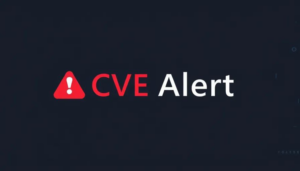CVE Alert: CVE-2025-9505 – Campcodes – Online Loan Management System
CVE-2025-9505
A flaw has been found in Campcodes Online Loan Management System 1.0. Affected by this issue is some unknown functionality of the file /ajax.php?action=save_loan_type. This manipulation of the argument ID causes sql injection. The attack is possible to be carried out remotely. The exploit has been published and may be used.
AI Summary Analysis
Risk verdict
High risk: remote, unauthenticated SQL injection with a published exploit exists; exploitation could lead to data access/modification.
Why this matters
The vulnerable endpoint is publicly reachable, and a PoC exploit is available, increasing likelihood of automated attempts. In a loan management context, attackers could exfiltrate or alter customer data and corrupt loan records, undermining trust and regulatory posture.
Most likely attack path
An attacker sends a crafted request to /ajax.php?action=save_loan_type with a manipulated ID parameter. Low attack complexity and no authentication required mean quick, automated attempts could succeed against the underlying database, with impact on confidentiality, integrity, and availability appearing at the application layer.
Who is most exposed
Any organisation hosting Campcodes Online Loan Management System on internet-facing servers is at risk, especially smaller financial services or MSP deployments using default configurations without strong WAF or input sanitisation.
Detection ideas
- Suspicious or repeated requests to /ajax.php?action=save_loan_type with abnormal ID values
- SQL error strings or unusual database errors in app logs
- WAF alerts for SQL injection patterns targeting the endpoint
- Anomalous data changes in loan_type or related tables
- Rapid spikes of traffic from external sources targeting the endpoint
Mitigation and prioritisation
- Apply vendor patch or upgrade to fixed version if available; verify remediation release and deploy promptly.
- Implement parameterised queries and strict input validation for all user-supplied inputs, especially ID-like fields.
- Restrict access to the vulnerable endpoint; deploy or strengthen a WAF rule to block injection attempts; consider IP allowlisting.
- Harden database credentials and enforce least-privilege access for the app account; rotate credentials as a precaution.
- Change-management: perform patch testing in staging, roll out in production with monitoring; escalate urgency if exploitation attempts increase. If a patch is available, treat as high priority.
A considerable amount of time and effort goes into maintaining this website, creating backend automation and creating new features and content for you to make actionable intelligence decisions. Everyone that supports the site helps enable new functionality.
If you like the site, please support us on “Patreon” or “Buy Me A Coffee” using the buttons below
To keep up to date follow us on the below channels.


![Cobalt Strike Beacon Detected - 140[.]143[.]132[.]170:80 4 Cobalt-Strike](https://www.redpacketsecurity.com/wp-content/uploads/2021/11/Cobalt-Strike-300x201.jpg)
